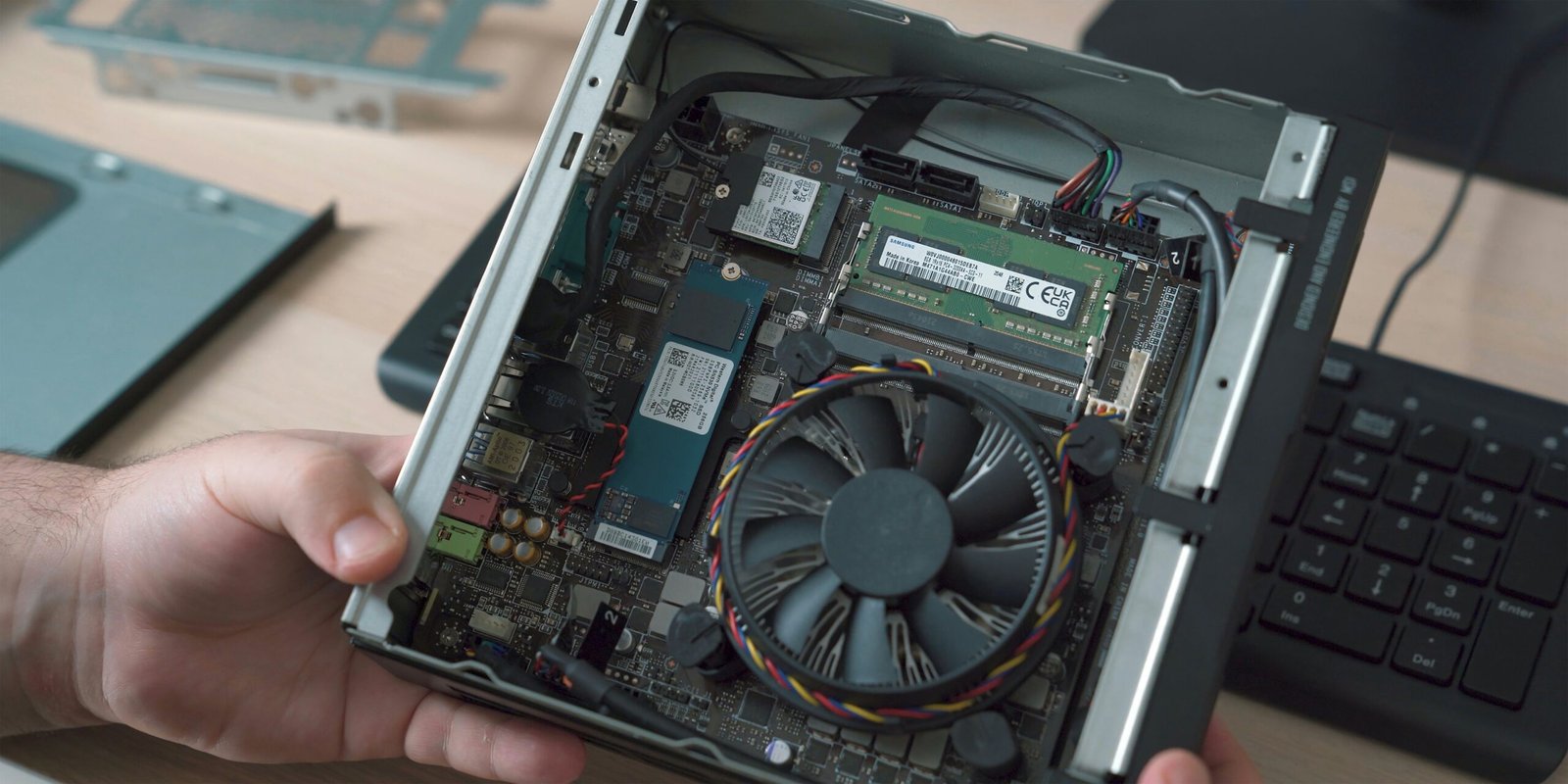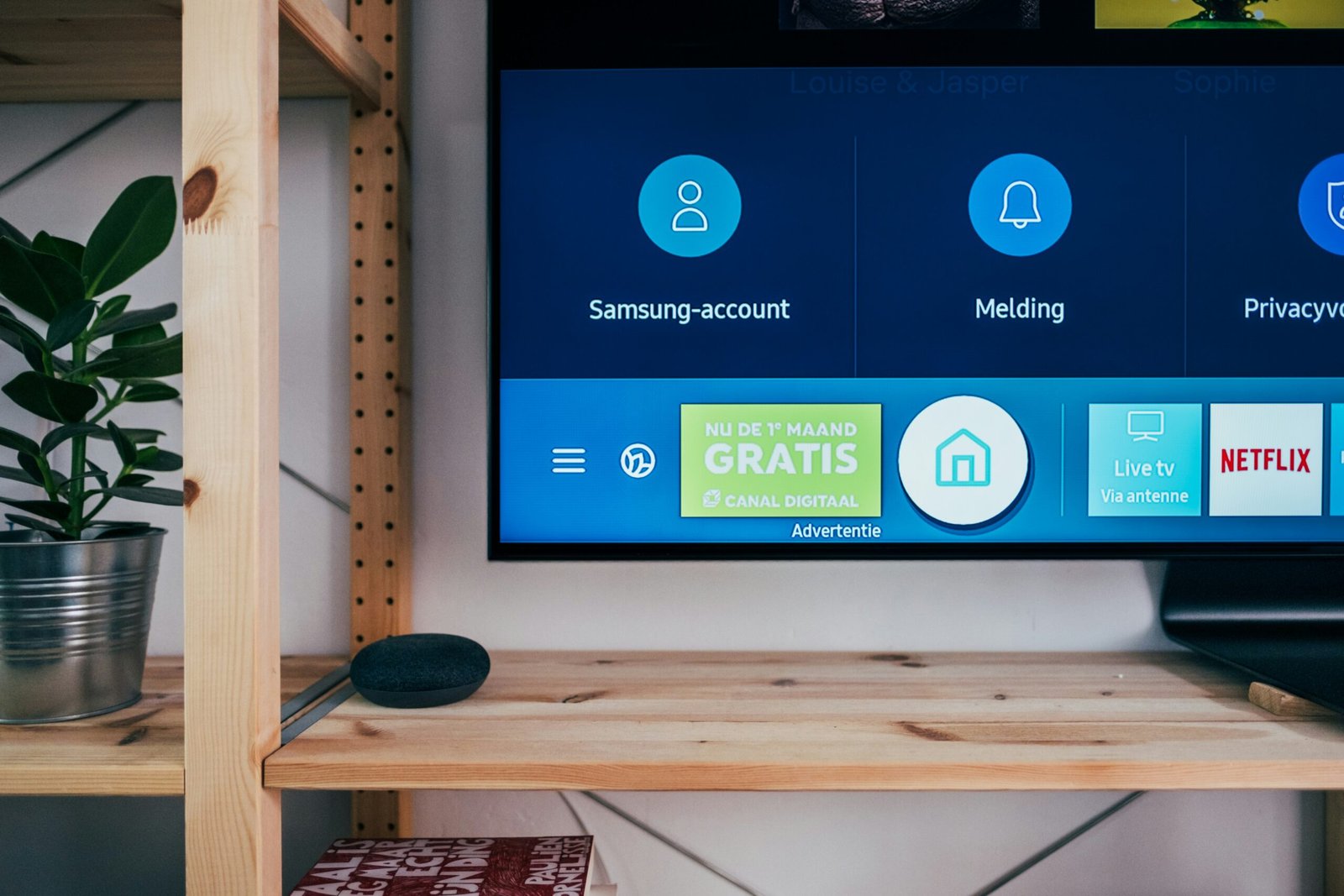Is Refurbishing Phones Profitable? Exploring the Potential and Pitfalls
Introduction to Phone Refurbishing
Phone refurbishing is a process that involves taking second-hand or faulty mobile devices, repairing them, and then reselling them. The goal is to restore these devices to a functional and often near-new condition, allowing them to be reused rather than discarded. The refurbishing process starts with sourcing pre-owned phones, which can come from various channels, including individual sellers, companies, or trade-in programs. Once acquired, these devices undergo thorough inspections to identify any defects or damages.
The refurbishment process includes a series of meticulous steps. Firstly, hardware repairs are performed. This can include replacing broken screens, fixing battery issues, and addressing any hardware malfunctions. After hardware repairs, the software is checked and updated if necessary, ensuring the phone operates smoothly and efficiently. The next stage involves comprehensive testing to verify that all functions and features are working as they should. Only after passing these rigorous checks is a phone considered refurbished and ready for resale.
The popularity of phone refurbishing is on the rise for several compelling reasons. From an environmental perspective, refurbishing significantly reduces electronic waste. By extending the life of existing devices, fewer resources are needed to produce new phones, thereby decreasing the overall carbon footprint associated with manufacturing and disposal. Additionally, refurbished phones provide a cost-effective alternative to buying new devices. Consumers can obtain high-quality phones at a fraction of the price of new ones, making technology more accessible to a broader audience.
In a market where sustainability and financial savings are increasingly valued, refurbishing offers a viable solution that addresses both concerns. This dual benefit has contributed to the growing acceptance and popularity of refurbished phones, making them an attractive option for environmentally-conscious and budget-savvy consumers alike.
“`html
Market Demand for Refurbished Phones
The market for refurbished phones has seen a significant upsurge in recent years, driven by a combination of economic, environmental, and technological factors. Consumers are increasingly opting for refurbished devices as a cost-effective alternative to brand-new models. This surge in demand can be quantified through various trends and statistics. For instance, a 2021 study revealed that the global market for refurbished smartphones grew by 10% year-over-year, reaching a valuation of approximately $50 billion USD. This growth trajectory is anticipated to continue, driven by both consumer preference and the implementation of more robust refurbishment processes.
One of the primary driving forces behind this shift is the affordability of refurbished phones. As the price of new smartphones continues to climb, buyers are looking for viable yet less expensive options. Refurbished phones, which offer a significant price reduction while preserving functionality comparable to new devices, present an attractive proposition. Moreover, the increasing sophistication of the refurbishment process ensures that many of these devices come with warranties and quality assurances, further boosting consumer confidence.
Geographical trends also play a crucial role in the market dynamics of refurbished phones. In developed economies such as the United States and European Union countries, there is a strong preference for high-quality refurbished smartphones, particularly among budget-conscious consumers and environmentally aware users. Meanwhile, emerging markets like India and Southeast Asia are witnessing a surge in demand, driven by the dual factors of economic constraints and the rapid proliferation of mobile technology. The affordability of refurbished phones makes them especially appealing in these regions, where consumers are keen to access advanced functionalities without the accompanying high costs.
Overall, the mounting demand for refurbished phones is a testament to their growing acceptance as a mainstream consumer choice. This trend highlights the shifting attitudes towards sustainability and cost-efficiency, signaling a robust market outlook for the refurbished phone industry.
“`
Economics of Refurbishing Phones
Understanding the financial dynamics of refurbishing phones is crucial for evaluating its profitability. The process begins with the acquisition of used phones, often sourced through trade-ins, bulk purchases, or returns. The cost of acquiring these devices can vary significantly depending on factors such as model, condition, and supply channels. On average, acquiring a used phone may cost anywhere from $20 to $100 per unit.
Once procured, the phones undergo a thorough refurbishment process, which includes diagnostic testing, repairs, part replacements, and software updates. Repair expenses can range widely, influenced by the complexity of the issues and the cost of replacement parts. Simple fixes like battery or screen replacements may cost between $10 to $50, while more extensive repairs involving motherboard or multiple component replacements can escalate to $100 or more per device.
Labor is another vital component in the refurbishing process. Skilled technicians are needed to ensure high-quality repairs, and their labor costs can add up. A typical technician might command an hourly wage between $15 to $30, translating to a labor cost of roughly $30 to $60 per phone, depending on the repair time required.
Logistical expenses also play a role in the overall cost structure. These include shipping, warehousing, and handling costs, which can accumulate to around $5 to $15 per phone. Additionally, marketing and sales efforts to offload the refurbished phones must be considered. Marketing expenses, inclusive of online advertisements, listing fees, and promotional activities, can average about $10 to $20 per unit sold.
After examining these costs, it is essential to juxtapose them against the potential revenue generated from selling refurbished phones. Typically, refurbished phones can be sold for approximately 50% to 80% of their original retail price. For instance, if a new phone retails at $800, a refurbished version might be sold for around $400 to $600, depending on its brand, model, and condition.
By comparing the total refurbishment costs – including acquisition, repair, labor, logistics, and marketing – to the sale price, potential profit margins can be derived. Generally, a profit margin of 10% to 30% per phone is achievable, though this can vary widely based on efficiency, scale, and market demand. Hence, while refurbishing phones presents viable profitability, it’s imperative to carefully manage costs and optimize operations to maximize returns.
Quality and Consumer Trust
Trust and quality assurance are pillars of the refurbished phone market. Refurbishers must adhere to stringent quality standards to build consumer trust. One way they achieve this is through robust warranty offerings, which provide a safety net for buyers and reflect the refurbisher’s confidence in their product. Typically, warranties can range from 30 days to a full year, giving consumers peace of mind that any potential issues will be addressed promptly.
Certification processes further solidify the trust between consumers and refurbishers. Notable certifications, such as those from the International Electrotechnical Commission (IEC) or ISO 9001, indicate that a refurbisher adheres to high-quality control practices. These certifications serve as a benchmark for consumers, assuring them that the devices have been thoroughly tested and meet specific quality standards. Additionally, some refurbishers have partnerships with original manufacturers, adding another layer of credibility and enhancing consumer confidence.
Standard practices to maintain product quality also play a crucial role. Refurbishers invest in cutting-edge diagnostic tools to identify and rectify any issues. Components such as batteries, displays, and motherboards are often tested and replaced if necessary. Data sanitization is another critical area; refurbishers use advanced software to ensure all previous data is erased, protecting the privacy of former users and adding an extra layer of security for new buyers.
Consumer concerns typically revolve around the longevity and reliability of refurbished phones. To address these, refurbishers often provide detailed product descriptions and transparent information about any repairs or parts replacements performed. Some even offer a grace period during which consumers can return the device if it does not meet their expectations. This level of transparency and commitment to quality helps to alleviate common apprehensions, fostering greater trust and encouraging more people to consider refurbished phones as a viable option.
“`html
Environmental and Ethical Implications
The refurbishment of phones offers substantial environmental benefits, contributing meaningfully to the reduction of electronic waste. By giving a second life to used devices, refurbishing mitigates the harmful impact of discarded electronics on our ecosystem. Not only does this process alleviate the burden on landfills, but it also conserves the resources and energy required to manufacture new devices. With the global concern over e-waste increasing, opting for a refurbished phone serves as a proactive step towards sustainability. The refurbishment industry helps reduce the extraction of raw materials, consequently decreasing the carbon footprint associated with the production cycle of mobile phones.
Beyond the environmental advantages, there are significant ethical considerations related to sourcing and labor practices within the refurbishing industry. Ethical refurbishing involves obtaining used phones through legitimate means, ensuring that devices are either returned, traded in, or recycled voluntarily by their previous owners. By adhering to responsible sourcing, refurbishers can avoid contributing to the controversial practices pertaining to the disposal and informal recycling of electronic devices.
Moreover, labor practices in the refurbishment sector must align with ethical standards to foster a fair and safe working environment. Companies engaged in refurbishing must ensure that employees, including those in developing countries, are afforded fair wages and safe working conditions. Ethical labor practices extend to preventing child labor and upholding workers’ rights, ensuring that the reconditioning process does not exploit vulnerable populations.
Ultimately, the environmental and ethical implications of refurbishing phones highlight the multifaceted benefits of choosing refurbished devices. By supporting this industry, consumers contribute to a more sustainable future while promoting ethical standards in labor and sourcing practices. The intertwining of environmental stewardship and ethical responsibility makes the choice of refurbished phones both a pragmatic and morally sound decision.
“`
Legal and Regulatory Challenges
The phone refurbishing industry is governed by a complex web of legal and regulatory frameworks, making it essential for businesses in this sector to stay well-informed and compliant. One of the primary legal concerns is device certification. Refurbishers must ensure that the restored devices meet the required standards and are certified accordingly. In many regions, specific regulatory bodies oversee the certification process to guarantee that refurbished phones are both safe and reliable for consumers.
Data privacy is another significant issue in the refurbishing sector. When a phone is repurposed, the refurbisher must guarantee that all personal data from the previous user is completely erased. Failure to do so can lead to severe legal repercussions, including fines and loss of reputation. Implementing robust data wiping procedures compliant with global standards such as the General Data Protection Regulation (GDPR) in Europe is crucial.
Intellectual property rights also come into play, particularly concerning the software and branding of the refurbished phones. Unauthorized use of proprietary software or logos can result in lawsuits and serious financial penalties. Refurbishers must navigate these waters carefully, fully understanding the licensing rules and restrictions associated with the devices they repair and resell.
Furthermore, import-export laws pose another layer of challenge. Different countries have varying regulations regarding the importation and exportation of electronic devices, including refurbished phones. These laws aim to control quality and prevent the inflow of substandard or potentially hazardous goods. Refurbishers engaging in international trade need to be acquainted with these regulations to avoid legal complications and facilitate smooth business operations.
Compliance mechanisms differ across regions, but it’s essential for refurbishers to adopt best practices and stay updated with any changes in the regulatory landscape. This often involves regular audits, certification renewals, and adherence to both local and international standards. Being proactive in legal compliance not only mitigates risks but also builds consumer trust and credibility in the competitive market of refurbished phones.
“`html
Success Stories and Case Studies
The refurbished phone market has seen remarkable success stories and lucrative business ventures. One such noteworthy example is Gazelle, an online marketplace for buying and selling used electronics. Gazelle’s business model revolves around acquiring pre-owned phones, inspecting, refurbishing, and reselling them. Initially launched in 2008, Gazelle quickly scaled, capitalizing on the rising demand for affordable smartphones. By 2015, the company became a household name in the refurbished phone industry, achieving profitability by purchasing devices at low costs and reselling them at competitive prices. Gazelle’s success demonstrates the viability and profitability of refurbishing phones, particularly when quality assurance and customer trust are prioritized.
Another illustrative case is that of Back Market, a French e-commerce platform specializing in refurbished electronics. Founded in 2014, Back Market identified a gap in the market for high-quality, certified refurbished phones. By partnering with certified refurbishers and implementing stringent quality control measures, Back Market built a reputation for reliable products. Today, the company has expanded globally, boasting a significant market share and achieving substantial revenue growth. The emphasis on certification and quality guarantees has been pivotal in gaining consumer confidence and driving profitability.
In the realm of smaller-scale entrepreneurs, John Smith’s venture, TechGrasp, showcases how individual business acumen can thrive in the refurbished phone market. John started TechGrasp from his garage, focusing initially on refurbishing iPhones. Using online marketing strategies and leveraging social media platforms, John expanded his customer base rapidly. Despite facing challenges such as sourcing reliable parts and ensuring quality control, TechGrasp’s emphasis on customer satisfaction and transparent business practices has led to a robust, sustainable business model.
These case studies exemplify how diverse strategies—ranging from rigorous quality control measures to effective online marketing—can overcome challenges in the refurbished phone market. They serve as valuable lessons and inspiration for other potential players considering entering this profitable sector.
“`
Future Prospects and Innovations
The phone refurbishing market is poised for significant growth, influenced by technological advancements and increasing consumer awareness. As technology continues to evolve, refurbishment processes are becoming more sophisticated, enhancing the quality and longevity of refurbished devices. Automated diagnostic tools and advanced software solutions now enable more accurate assessments and efficient repairs, reducing turnaround times and improving customer satisfaction.
Market analysts predict substantial growth in the phone refurbishing sector. With rising e-waste concerns and consumers’ growing preference for cost-effective alternatives to new devices, the demand for refurbished phones is expected to rise. This trend is particularly pronounced in emerging markets where affordability is a key purchasing criterion. Additionally, collaboration between original equipment manufacturers (OEMs) and third-party refurbishers could further fuel market expansion by ensuring rigorous quality standards and providing warranty coverage.
Several emerging trends are shaping the future of the phone refurbishing industry. The integration of blockchain technology for tracking the lifecycle of devices is gaining traction. This innovation ensures transparency and builds consumer trust by providing comprehensive histories of refurbished phones. Furthermore, the growth of online marketplaces dedicated to refurbished electronics is making it easier for consumers to access these products.
For new entrants looking to break into the phone refurbishing market, staying abreast of technological updates and industry trends is crucial. Investing in advanced diagnostic and repair equipment can set a business apart by improving efficiency and product quality. Fostering partnerships with suppliers of spare parts and OEMs can also provide competitive advantages. Additionally, focusing on sustainability and promoting the environmental benefits of buying refurbished devices can resonate well with today’s eco-conscious consumers.
Overall, the future of the phone refurbishing industry looks promising. Continuous innovation and market expansion are likely to create numerous opportunities for businesses and consumers alike.







